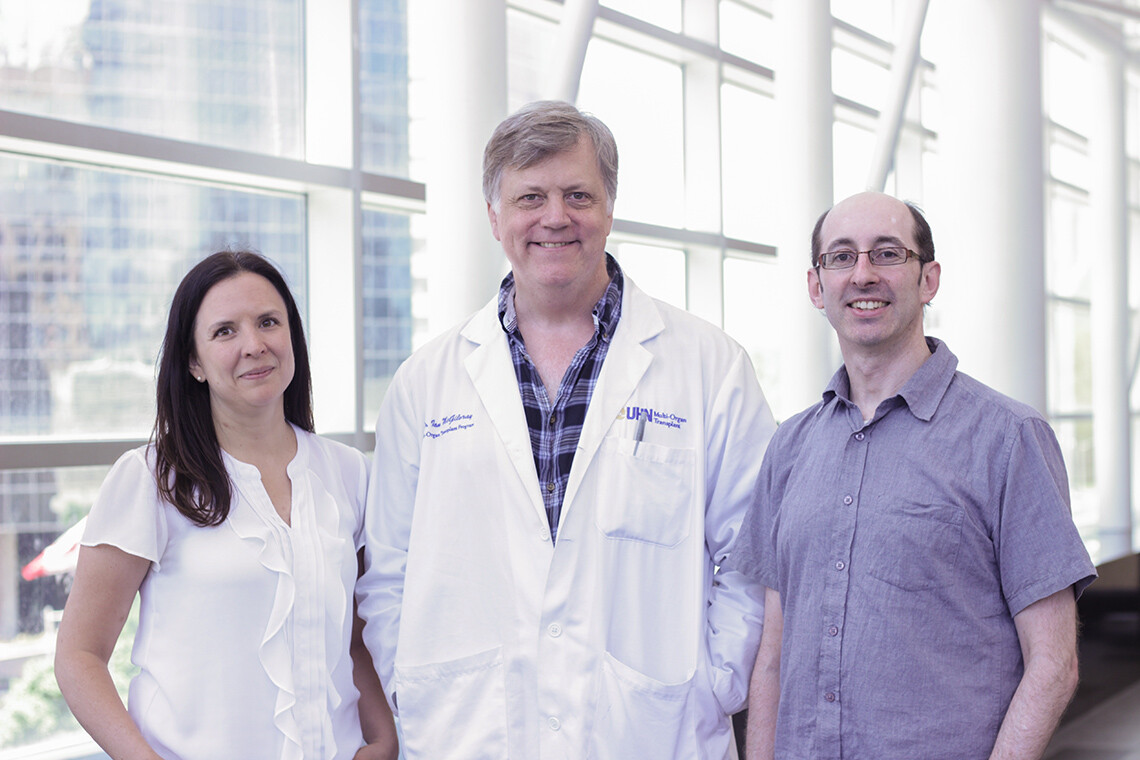Main Second Level Navigation
Aug 24, 2021
U of T's Medicine by Design helps unite international researchers working to map every human cell

Photo courtesy of UHN
Professor Gary Bader (right), who is on the organizing committee for the Human Cell Atlas, helped researchers Sonya MacParland (left) and Ian McGilvray (right) create the first map of the human liver at the cellular level